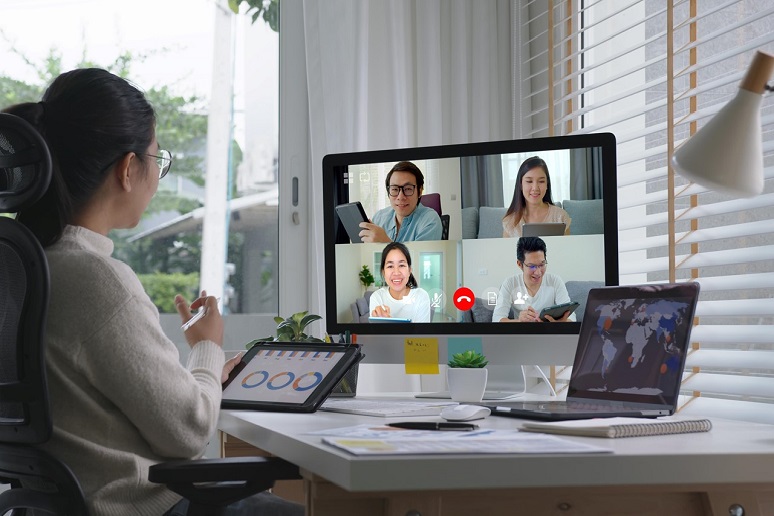The contact center market is quickly embracing video as a new channel but will customers use the newest channel?
Last month,
Zoom launched its own standalone CCaaS solution, Zoom Contact Center with a single desktop client capable of contact center, general telephony, audio and video meetings, and messaging/chat. Zoom Contact Center has stood apart with native video capabilities.
At Enterprise Connect, there are new video-enabled CCaaS solutions being announced from several more providers, including 8x8, RingCentral, Vonage, and Edify. How video is enabled in the contact center varies. For example, a digital channel could be escalated to video by agent or icon, or an agent might move a voice caller to video by sending the customer a link over SMS or email.
I predicted that this is the year the contact center will embrace video. But to be fair, I’ve been predicting that for several years now. Regardless, it’s finally happening and it’s great.
The key question is: Why now?
First, the technology is already in place. Contact center vendors have been adding additional channels for years. Call it digital solutions, omnichannel, multi-channel, whatever you like. Many of us, especially as we cross generational divides, appreciate options as we have personal communication preferences, which doesn’t always translate into talking to someone on the phone.
Second, the world has access to video-enabled technology now. There isn’t an individual or a household that doesn’t have access to devices with embedded video capabilities – smartphones, laptops, tablets, personal smart devices, and even desktop PCs. A video enabled desktop or home is much more than just a webcam, it includes a camera, audio (mic and speakers/headset), and broadband network. So when contact center agents send a customer a video-chat link, they know that the person on the other end has the technology to participate.
Video at our fingertips didn’t happen overnight. The addition of video enabled devices and applications that facilitate video communications has been building for years which led me to assume video in the contact center was inevitable. But why has it taken until 2022 to emerge as a mainstream option within contact center platforms?
Quite simply, the world wasn’t ready. The technology has been ready for some time, but the general population wasn’t comfortable with video. It’s odd, but video seemed less natural than audio-only or even text. It took a pandemic that forced people worldwide to work and live in isolation that drove demand for technologies that would keep us connected “in-person.”
COVID-19 came at a time when video-enabled devices and services made face-to-face communications possible despite people being physically separated. The world quickly adapted to new ways of communicating with video and learned what it was good for and what was better left to other forms of communications.
The movie Up in the Air has the radical premise of terminating employees over video — it may have been a ludicrous plotline then, but over the past few years, hiring and firing employees over video calls has become a common practice. For that matter, so have K-12 and higher ed classes, weddings, graduations, family reunions, major holiday get-togethers, and funerals.
I’m not suggesting the move to video has been universally beloved, or that conducting every kind of work-related interaction over video was ideal. Nothing can truly replace in-person connections. But more importantly, everyone young and old tried video-based interactions and learned to use video as a communications channel. Even as many of us return to meeting people in person, traveling, working in office environments, attending school in the classroom, and going to stores, the use of video communications has never been higher and is here to stay.
As a society we have adapted and embraced the benefits of video and indeed there are certain kinds of business interactions that are more appropriate over video than in person. A simple example is telemedicine. Many people were reluctant to visit a doctor for routine issues during the pandemic. A quick consultation with a doctor became preferable for the medical practice and the patient.
When we think in terms of contact centers, video is much more than talking heads. Video encompasses the ability to share your screen and confirm both parties are seeing the same thing. Screenshare can be very effective during complex interactions such as hammering out contracts and doing design work. Screensharing is ideal for troubleshooting in real-time by showing a service agent a shipment that came damaged or a piece of technology that isn’t working properly. Video within the contact center gives businesses the ability to resolve issues more efficiently and more quickly than relying on the back-and-forth exchanges in phone calls, chat, or email.
Video won’t be suitable for all contact centers so don’t expect it to show up as an option with every interaction. Having dedicated agents for video doesn’t scale for high volume contact centers in industries like finance or air travel, but might be appropriate for certain tiers of customers or specific types of interactions. For example, elite customers on airlines generally receive shorter hold times and more skillful agents, perhaps that upgraded experience will soon include video.
There will be a time when kids will never believe that back in the good old days, the best contact centers serviced customers with audio-only 800 numbers.
Dave Michels is a contributing editor and Analyst at TalkingPointz.









